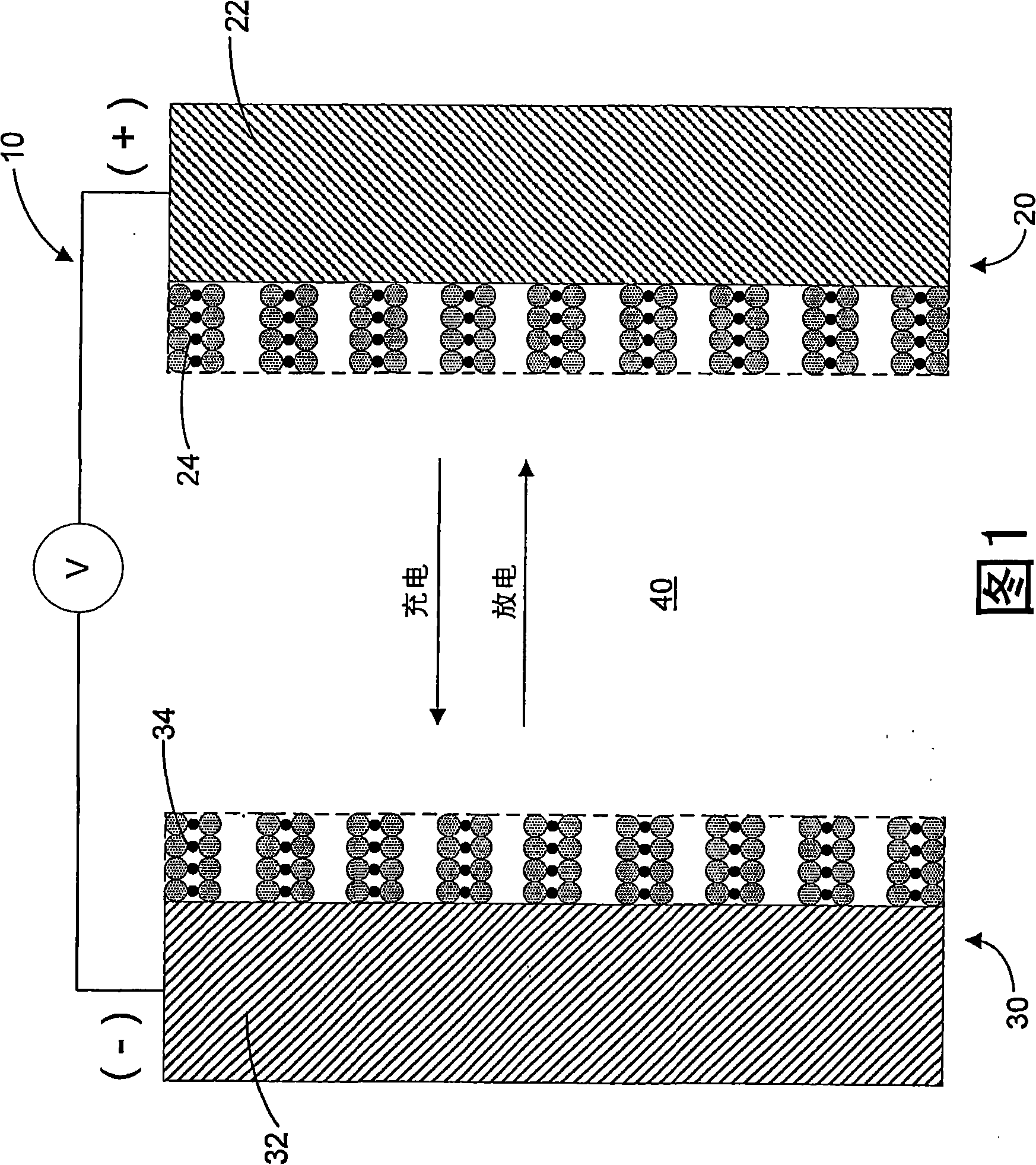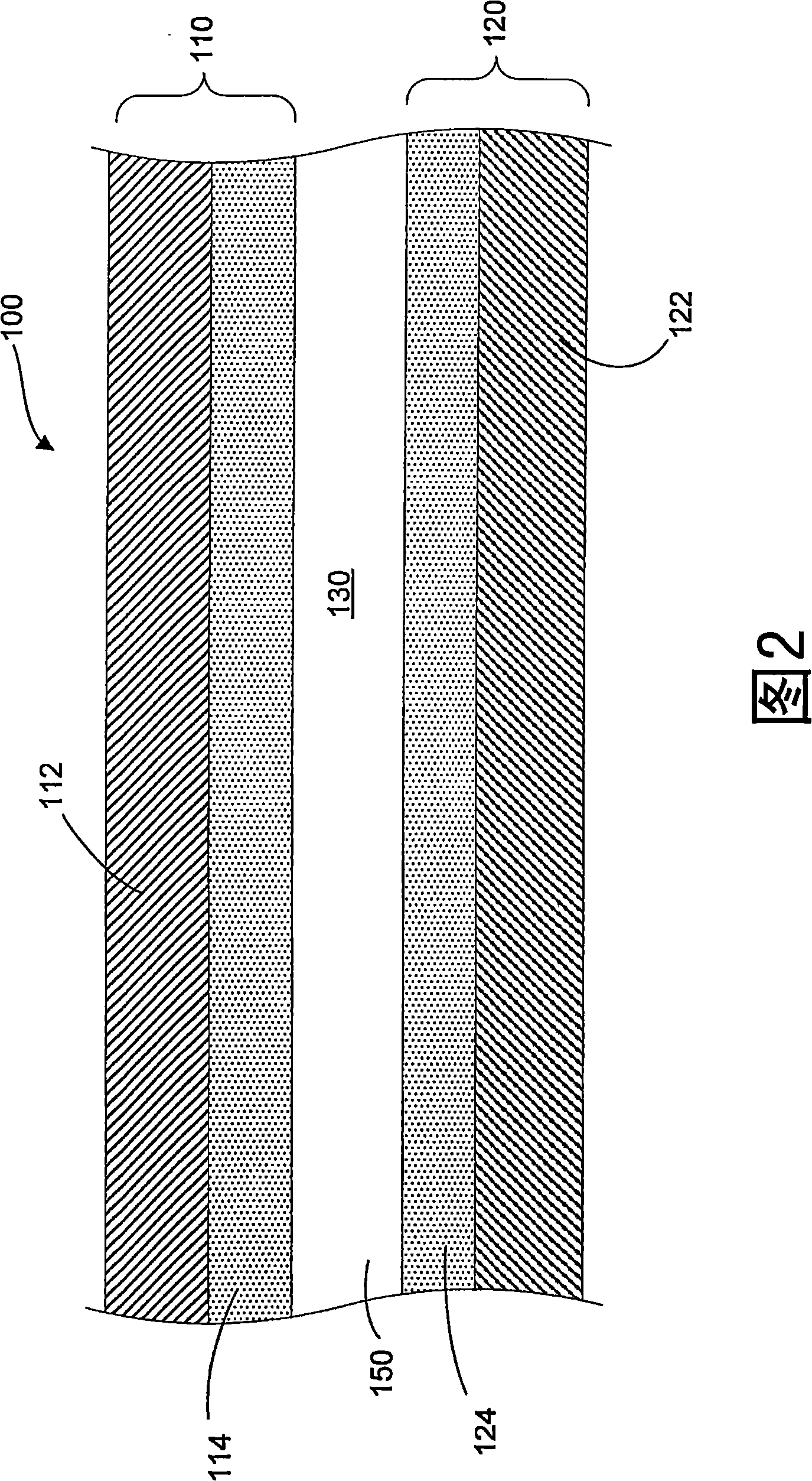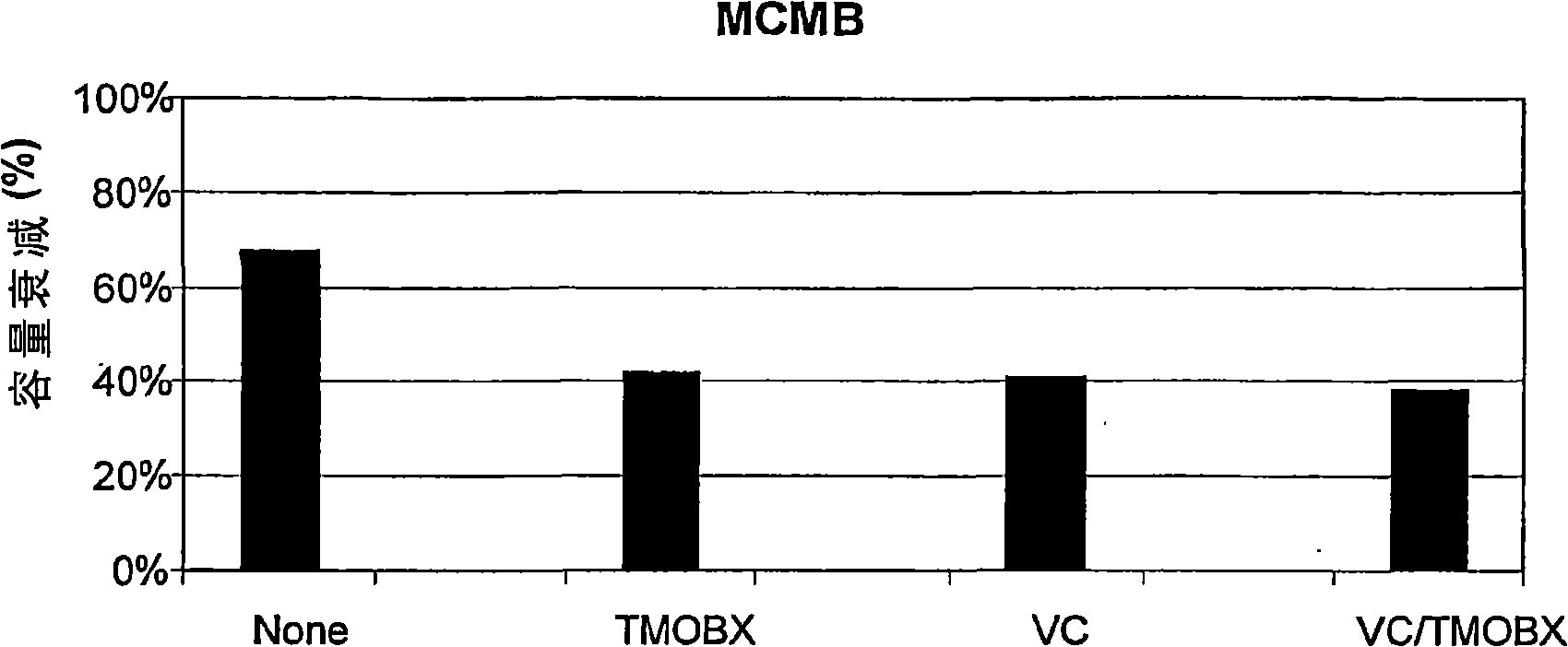Lithium-ion battery
A lithium-ion battery, negative electrode technology, applied in battery electrodes, secondary batteries, circuits, etc., can solve problems such as capacity fading
- Summary
- Abstract
- Description
- Claims
- Application Information
AI Technical Summary
Problems solved by technology
Method used
Image
Examples
Embodiment Construction
[0019] According to an exemplary embodiment, there may be provided a battery which may exhibit enhanced resistance to capacity fading during battery life. The battery includes a carbon-containing negative electrode and an electrolyte including one or more additives for reducing the amount of capacity fade experienced by the battery during use. Such batteries may be used in any of a number of applications, including implantable medical devices, that require a relatively constant capacity throughout their useful life.
[0020] Referring to FIG. 2 , a schematic cross-sectional view of a portion of a Li-ion battery 100 is shown, according to an exemplary embodiment. According to an exemplary embodiment, battery 100 is rated between approximately 10 and 1000 milliamp hours (mAh). According to another exemplary embodiment, the battery is rated between approximately 100 and 400 mAh. According to another exemplary embodiment, the battery is an approximately 300mAh battery. Accordin...
PUM
| Property | Measurement | Unit |
|---|---|---|
| diameter | aaaaa | aaaaa |
| thickness | aaaaa | aaaaa |
| thickness | aaaaa | aaaaa |
Abstract
Description
Claims
Application Information
 Login to View More
Login to View More - R&D
- Intellectual Property
- Life Sciences
- Materials
- Tech Scout
- Unparalleled Data Quality
- Higher Quality Content
- 60% Fewer Hallucinations
Browse by: Latest US Patents, China's latest patents, Technical Efficacy Thesaurus, Application Domain, Technology Topic, Popular Technical Reports.
© 2025 PatSnap. All rights reserved.Legal|Privacy policy|Modern Slavery Act Transparency Statement|Sitemap|About US| Contact US: help@patsnap.com



